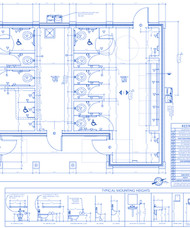Restroom Requirements for Businesses: What You Need to Know to Stay Compliant
Restrooms might not be the first thing that comes to mind when you think about business operations, but they’re one of the most closely regulated parts of any facility. From OSHA requirements to ADA accessibility standards, there’s more to compliance than just keeping the space clean. Whether you're outfitting a new building or updating an older one, understanding what’s required in a workplace restroom is essential for legal compliance and employee well-being.
At Berl’s Commercial Supply, we help businesses stay equipped with the right products to meet code and keep facilities running smoothly.
Who Sets the Standards?
Restroom requirements for businesses aren’t one-size-fits-all. They’re shaped by a mix of federal regulations, local building codes, and industry-specific guidelines. The Occupational Safety and Health Administration (OSHA) sets the baseline for workplace restroom access, including how many fixtures are required and how often they must be maintained.
The Americans with Disabilities Act (ADA) adds another layer, focusing on accessibility - everything from stall width to sink clearance. On top of that, local health departments and plumbing codes may have additional rules depending on your state, municipality, or business type.
Understanding which rules apply starts with your location and workforce size. Staying aligned with these standards isn’t just about avoiding citations - it’s about building a workplace that works for everyone.
Key Restroom Requirements by Law
At a minimum, OSHA requires that businesses provide accessible, working restrooms with a sufficient number of toilets based on the number of employees. For example, a facility with 16 to 35 employees must have at least two toilet fixtures. The requirements increase as your workforce grows.
Restrooms must be available at all times during work hours. Employers can’t make staff wait unreasonably or require long travel times to reach a facility. In most settings, shared restrooms are acceptable, but some industries - like construction or food processing - may face stricter rules.
The ADA adds specific criteria for accessible restrooms, including:
-Doorways at least 32 inches wide
-Grab bars positioned behind and beside the toilet
-Clear floor space for wheelchair maneuvering
-Mounting heights for sinks, soap dispensers, and dryers within reach range
Even if you’re not building new or doing a full remodel, retrofitting for compliance is often required when accessibility issues are identified. Following these standards doesn’t just help you meet the law; it creates a safer, more functional space for everyone who uses your facilities.
Are Businesses Required to Have a Public Restroom?
In most cases, businesses are not legally required to provide restrooms for the general public, only for employees. OSHA regulations focus on employee access, not customer access. However, local health departments or building codes may require public restrooms in certain types of establishments, especially those that serve food or accommodate large numbers of visitors, like retail stores or restaurants.
Even when not mandated, offering a public restroom can improve customer experience and keep traffic flowing through your business. If you choose to provide one, it still needs to meet health and accessibility codes, including proper signage, cleaning schedules, and ADA-compliant fixtures.
Restroom Requirements for Restaurants
Restaurants fall under stricter restroom regulations due to health department oversight and high customer traffic. In most states, if your restaurant offers on-premise dining, you're required to provide restrooms for customers. The number and layout depend on seating capacity and local code.
Typical requirements include:
-Separate restrooms for men and women if seating exceeds a set threshold (often around 20 seats)
-At least one accessible restroom that meets ADA standards
-Clear signage and easy access from public areas
-Handwashing stations with soap, warm water, and hygienic drying options
Restrooms must be kept clean, stocked, and functional throughout business hours. Any lapse in upkeep can result in health code violations. Berl’s helps food service businesses stay ahead of inspections with commercial-grade dispensers, bulk soap, paper products, and janitorial essentials built for high-traffic environments.
Restroom Requirements Based on Occupancy
The number of restrooms a business must provide is often determined by occupancy, the maximum number of people allowed in the building at one time. Local plumbing codes, typically based on the International Plumbing Code (IPC), outline how many toilet fixtures are needed per occupant load.
For example, a general office might need:
-1 toilet per 25 occupants up to 50, and
-1 additional toilet per 50 occupants thereafter, split between men’s and women’s facilities.
Assembly spaces like theaters, restaurants, or event venues usually require more fixtures due to shorter peak usage times. Retail and warehouse spaces may fall under different ratios.
Occupancy-based planning ensures facilities can handle demand without long wait times or overuse. It’s essential to calculate your building’s occupancy load correctly and ensure your restrooms are scaled to meet that demand. Berl’s offers durable, high-capacity restroom supplies that help businesses handle volume without sacrificing cleanliness or code compliance.
Hygiene and Maintenance Expectations
Meeting code is only part of the equation - keeping restrooms clean, stocked, and operational is just as critical. OSHA requires that facilities be “maintained in a sanitary condition,” which includes functional plumbing, adequate ventilation, and access to soap and drying options.
At a minimum, every restroom should be equipped with:
-Toilet tissue dispensers
-Liquid soap in sealed containers
-Hand-drying options (paper towels or hand dryers)
-Covered waste bins, especially in women’s restrooms
Frequent cleaning is key. High-traffic areas should be checked multiple times per shift for cleanliness and supply levels. Overflowing trash, empty dispensers, or out-of-order fixtures can lead to employee complaints and, in regulated environments, potential citations.
Routine inspections help prevent issues before they become problems. Berl’s supplies commercial-grade soaps, paper products, and dispensers designed to handle daily wear in high-use environments, helping facility teams stay on top of restroom upkeep with fewer interruptions.
Supply Checklist: What Every Compliant Restroom Needs
A compliant restroom isn't just about layout and fixtures - it's about stocking the right products consistently. Whether you're managing a single office or a multi-floor facility, these essentials should be on hand at all times to meet hygiene standards and employee expectations.
Core supplies include:
-Toilet paper in a secure dispenser
-Liquid hand soap (bulk-fill or cartridge system)
-Hand-drying method (paper towels or electric dryer)
-Sanitary disposal containers (in all women’s restrooms)
-Trash bins with liners
-Air fresheners or odor control systems
-Cleaning products for daily maintenance
Dispenser style and capacity can make a big difference in efficiency. Wall-mounted soap dispensers, centerpull paper towel systems (or better yet, hand dryers!), and jumbo roll toilet paper holders reduce restocking frequency and limit waste.
Berl’s Commercial Supply stocks restroom products built for performance and volume - from high-capacity paper systems to durable dispensers and janitorial refills. Our product experts can help you build a supply plan that keeps your restrooms compliant and ready, no matter the foot traffic.
Common Compliance Mistakes
Even well-managed facilities can fall short of restroom compliance if certain details get overlooked. These common missteps often lead to citations, complaints, or costly retrofits:
Inadequate fixture count
Failing to match restrooms to occupancy or employee count is a frequent violation. Skipping the math can result in long waits, overuse, and noncompliance with OSHA or local plumbing code.
Missing or poorly maintained accessibility features
Noncompliant grab bars, sinks mounted too high, or narrow doorways are all ADA issues that get flagged in inspections. Accessibility can’t be an afterthought - it’s required by law.
Empty dispensers or poor hygiene supplies
No soap, no paper, no excuse. Routine checks and reliable supply partners are essential to keeping restrooms fully stocked.
Poor ventilation and odor control
Restrooms must be ventilated and free from persistent odors. Neglecting this impacts user comfort and facility perception.
Inadequate signage
Unclear or missing signs - especially those indicating accessible restrooms - can cause confusion and violate building codes.
Avoiding these mistakes starts with regular inspections and the right supply plan. Berl’s helps facility teams cover the details with durable, compliant restroom solutions built for commercial use.
When and How to Upgrade
Restroom compliance isn’t a one-time project. As codes evolve and building use changes, your facilities may need updates to stay aligned. Whether you're renovating a commercial restroom, expanding, or just noticing more complaints than usual, it might be time to reassess.
Key signs it’s time to upgrade:
-Frequent clogs, leaks, or fixture breakdowns
-Outdated layouts that don’t meet current ADA guidelines
-Inadequate fixture count for your current staff or visitors
-High maintenance costs tied to inefficient dispensers or supplies
-Persistent odor or ventilation issues
Even small changes, such as switching to higher-capacity dispensers or installing touch-free fixtures, can improve cleanliness and reduce labor. Larger upgrades, like adding a stall or improving layout flow, may be necessary as your workforce or customer base grows.
Berl’s Commercial Supply works with facility teams to identify smart, scalable solutions that meet code and perform under pressure. Whether you’re upgrading for compliance or convenience, we can help you choose products that fit your space, budget, and long-term maintenance goals.
Build a Restroom That Works for Everyone
Restroom compliance isn’t just about checking boxes - it’s about creating a clean, accessible space that supports your business and the people who use it every day. From fixture counts to hygiene supplies, every detail plays a role in meeting legal standards and maintaining operational efficiency.
Berl’s Commercial Supply helps businesses stay ahead with commercial-grade restroom products built for compliance, durability, and ease of maintenance. Whether you're managing a small office or a multi-site facility, we’ve got the supplies and expertise to keep your restrooms ready.

